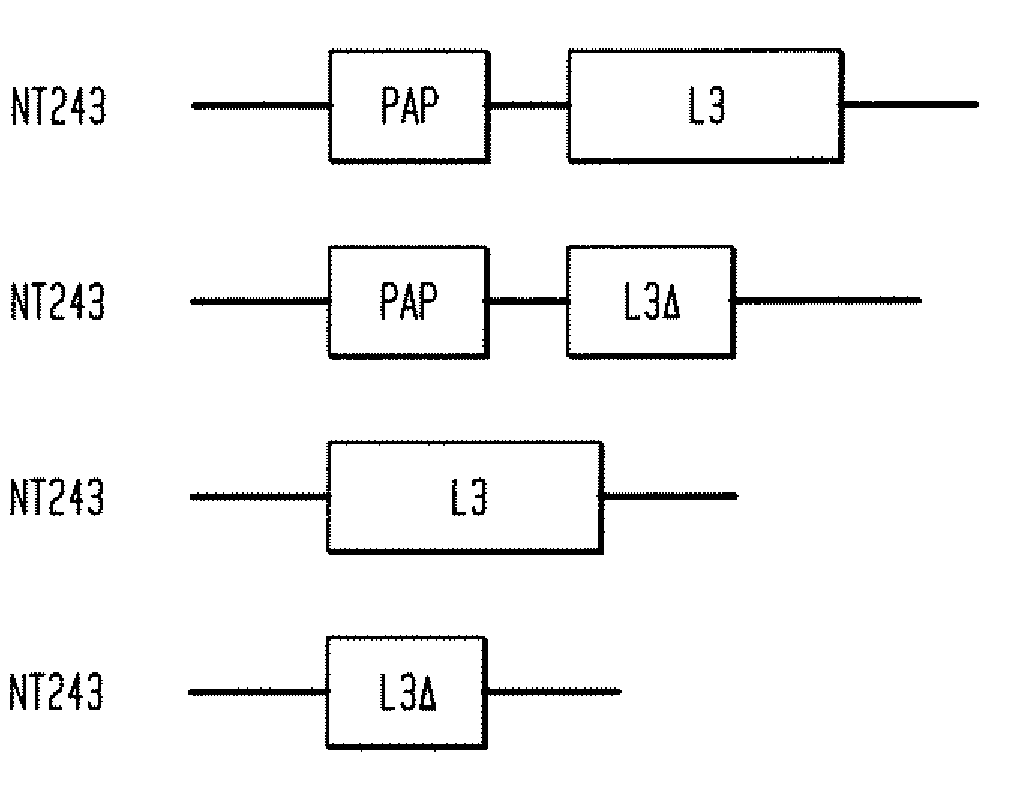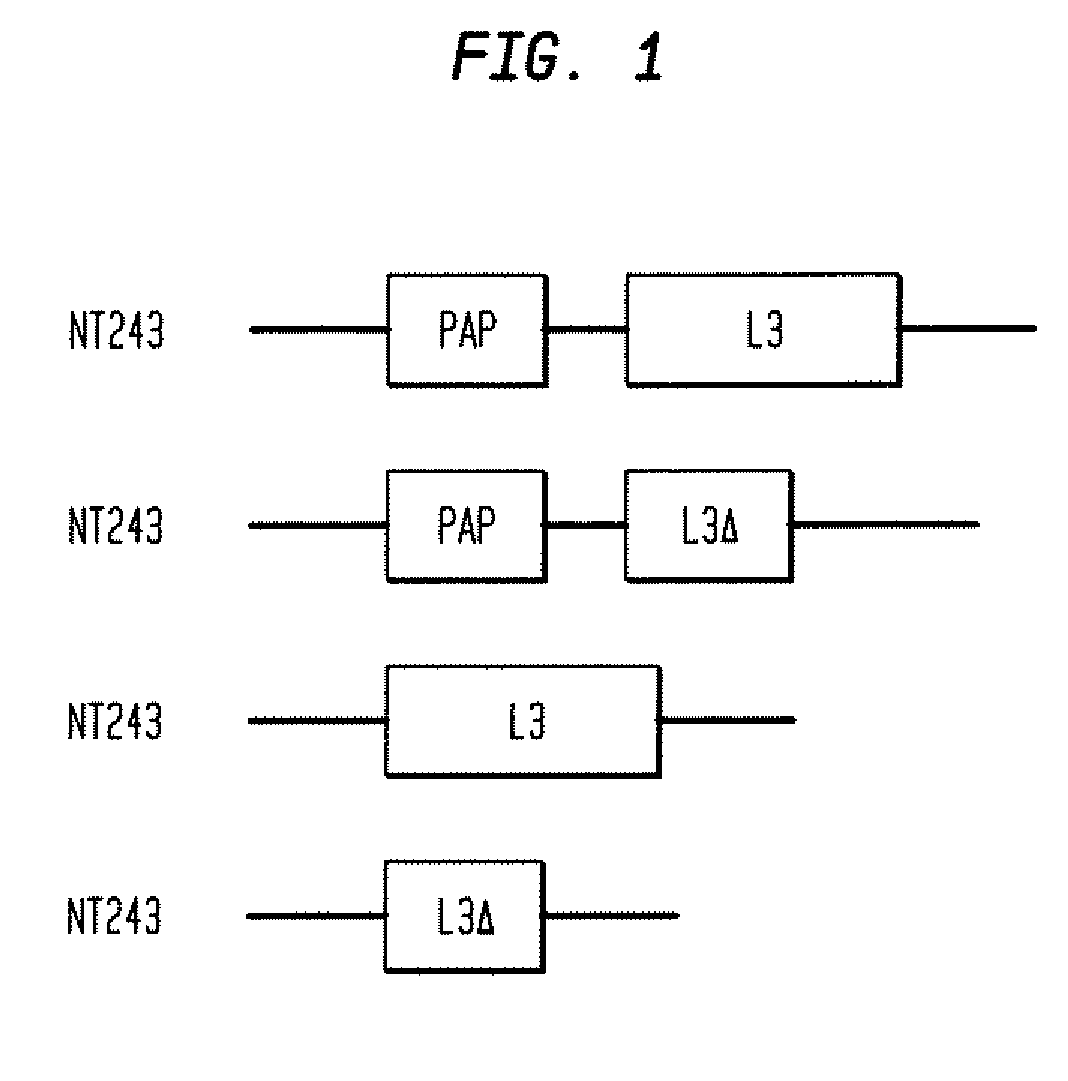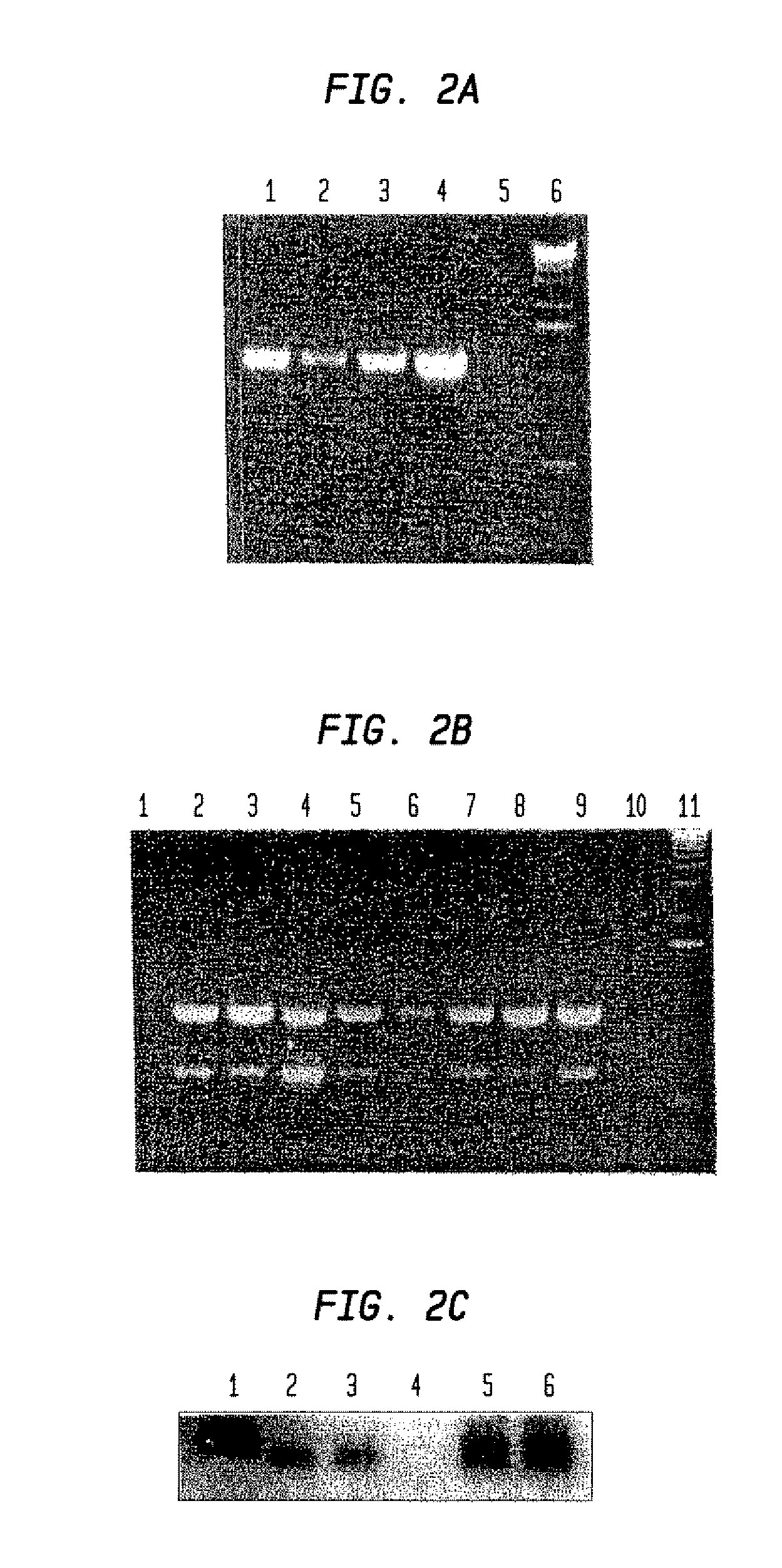Transgenic plants expressing L3 delta proteins are resistant to trichothecene fungal toxins
a technology of trichothecene and toxins, which is applied in the field of transgenic plants expressing l3 delta proteins that are resistant to trichothecene fungal toxins, can solve the problems of reducing the economic value of pap, increasing the cost of goods to the ultimate purchaser, and not showing antifungal activity in vitro. , to achieve the effect of reducing toxicity
- Summary
- Abstract
- Description
- Claims
- Application Information
AI Technical Summary
Benefits of technology
Problems solved by technology
Method used
Image
Examples
Embodiment Construction
[0046]A primary aspect of the present invention is directed to DNA sequence that encodes a polypeptide having at least the first 21 to about 99 N-terminal amino acid residues of a full-length eucaryotic L3 protein (hereinafter “L3 N-terminal polypeptides”, or “L3 N-terminal polypeptide fragments,” or an analog of the L3 polypeptide. Eucaryotic L3 proteins include, but are not limited to human, yeast, bovine, mice, rat and higher plant (e.g., rice wheat, barley, and tobacco) and Arabidopsis L3 proteins. An alignment of the amino acid sequences of full-length L3 proteins from Arabidopsis (i.e., AtRPL3A and AthRPL3B), Nicotiana tabacum (i.e., NtRPL3-8d and NtRPL3-10d), yeast (i.e., YRPL3), and rice (i.e., HvRPL3) various L3 proteins, and their first 100 amino acid residues, are illustrated in FIGS. 11A and B. Nucleotide and corresponding amino acids sequences of the yeast wild-type L3 gene (rpl3), the tobacco “8d” L3 and “10d) proteins, and the mutant tcm1 gene, are illustrated in FIGS...
PUM
| Property | Measurement | Unit |
|---|---|---|
| resistance | aaaaa | aaaaa |
| full-length | aaaaa | aaaaa |
| pathogen resistance | aaaaa | aaaaa |
Abstract
Description
Claims
Application Information
 Login to View More
Login to View More - R&D
- Intellectual Property
- Life Sciences
- Materials
- Tech Scout
- Unparalleled Data Quality
- Higher Quality Content
- 60% Fewer Hallucinations
Browse by: Latest US Patents, China's latest patents, Technical Efficacy Thesaurus, Application Domain, Technology Topic, Popular Technical Reports.
© 2025 PatSnap. All rights reserved.Legal|Privacy policy|Modern Slavery Act Transparency Statement|Sitemap|About US| Contact US: help@patsnap.com



